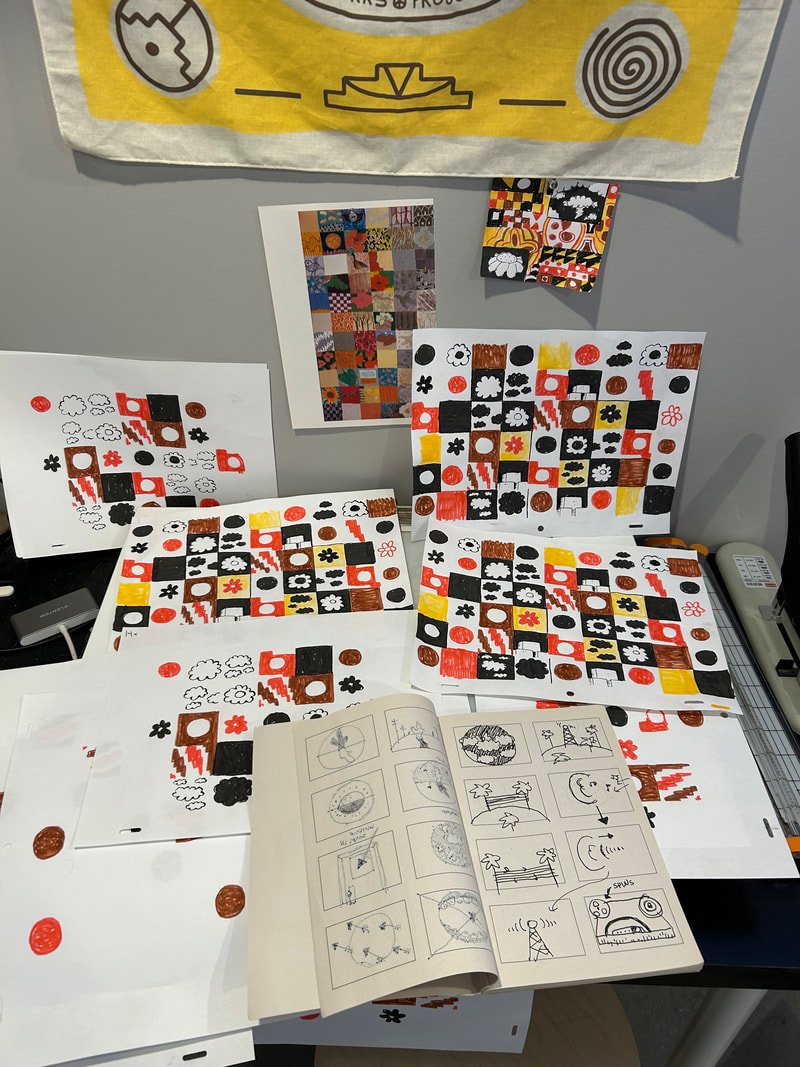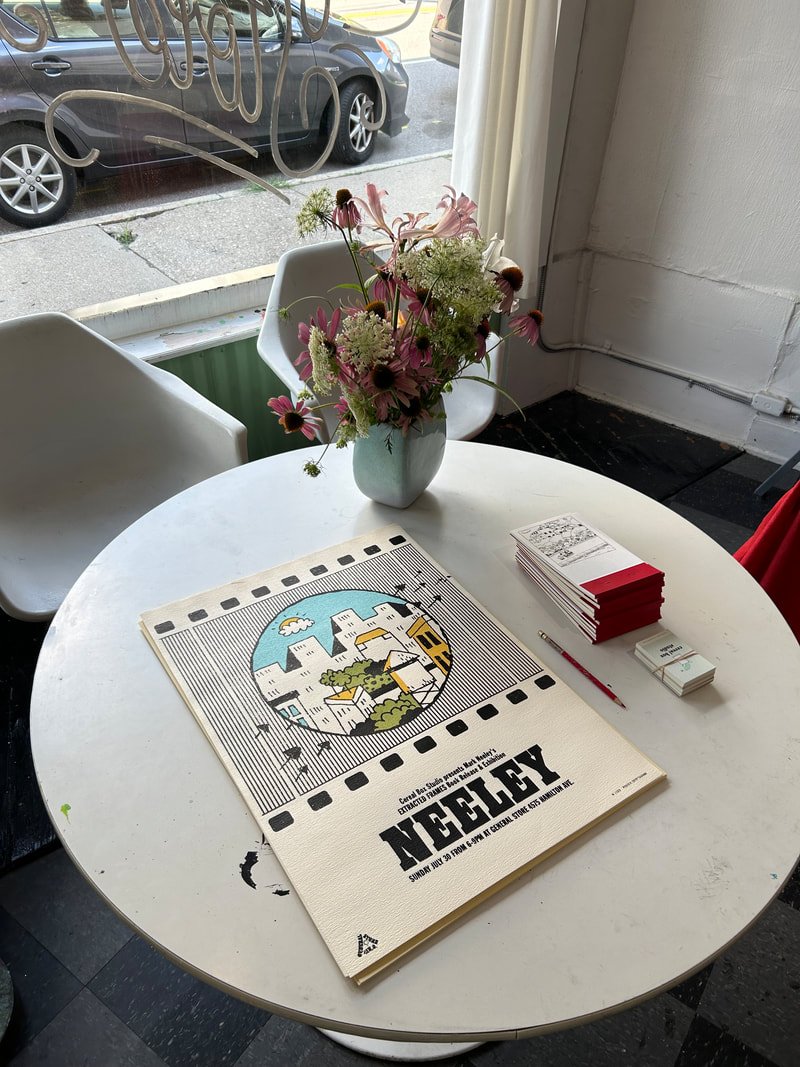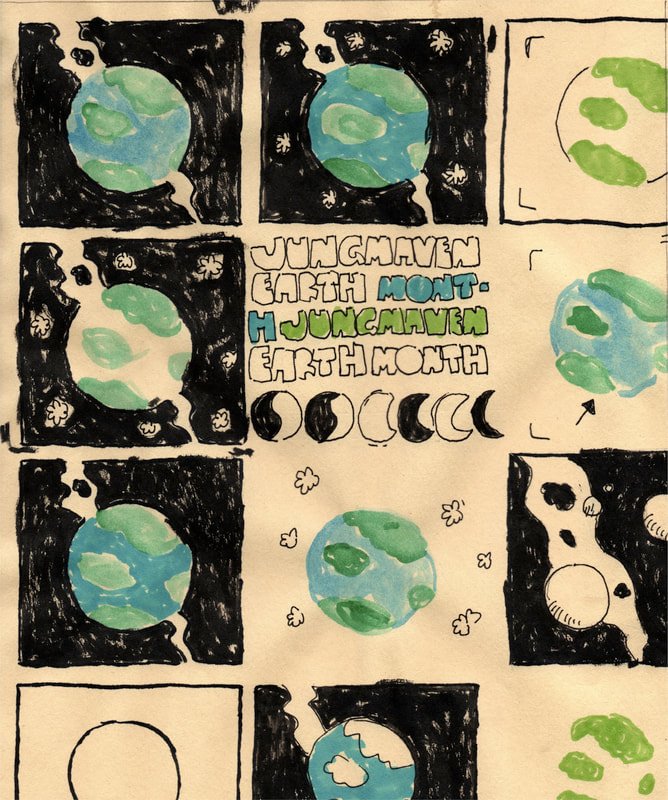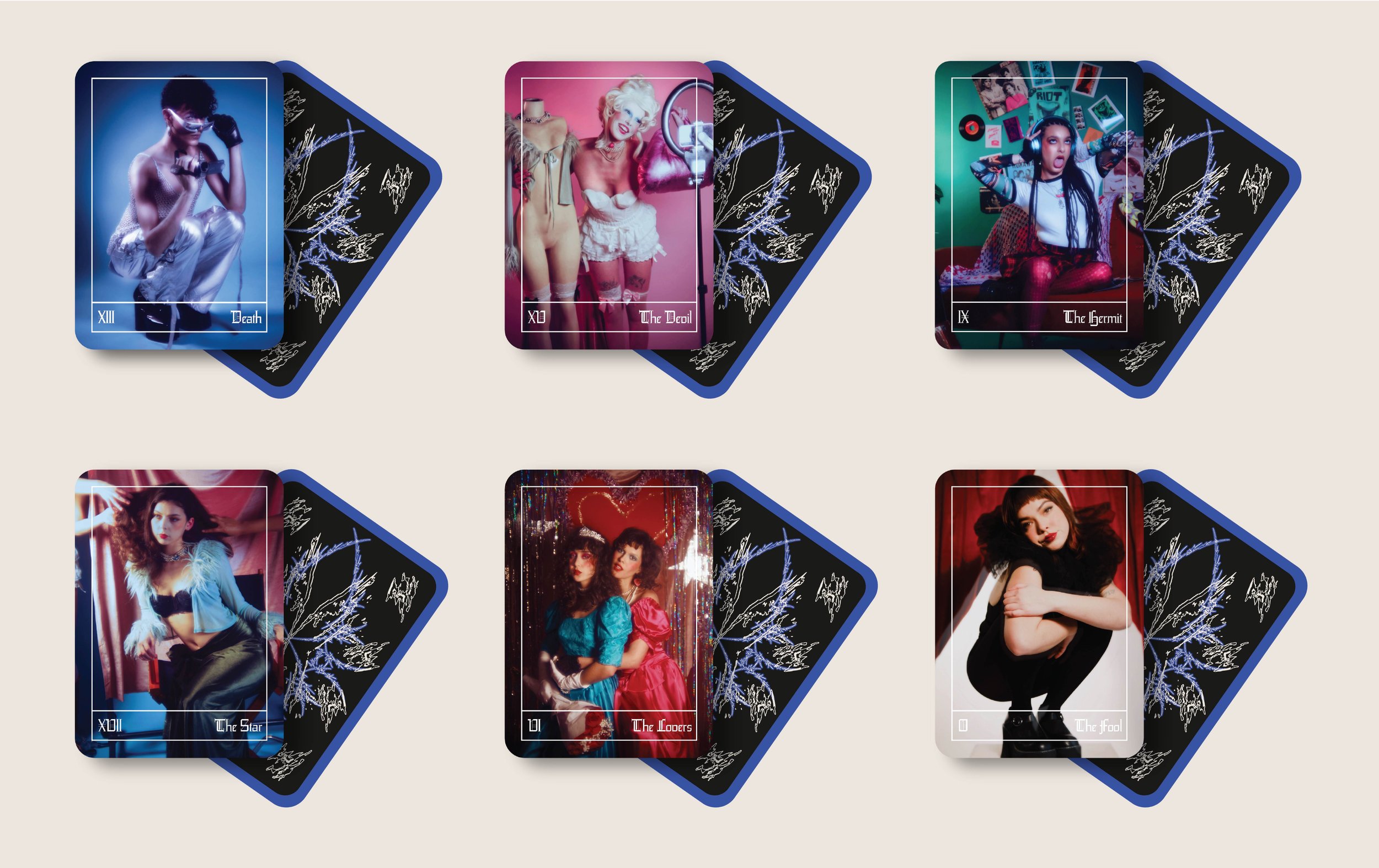
Interview
Mark Neeley
May 10, 2024 | Mark Neeley in conversation with Jose Padilla
Based in Cincinnati, Mark Neeley (@markaneeley) covers his recent collaboration with the clothing brand Madewell. In addition, he goes in depth about previous works with Aquarium Drunkard, creating music videos with musical acts using his signature animation analog style, and inspirations for his work.
How was it creating the collaboration with Madewell?
It was great. I was pretty surprised they contacted me out of the blue and I think that they might have seen I did some animation, which is kind of primarily what I do for a brand called Jungmaven, a hemp clothing company based out in L.A. I'm just guessing that's where they saw my work, I'm not exactly sure, but it was really great. It is this second time that my designs were used for shirts in a clothing brand. This one that just came out was the second round of shirts.
The crazy part to me was that I thought they would want me to make brand-new designs for their shirts, but they actually went back and looked at my website where I just published everything. It's like a giant collage portfolio type and they actually just picked out previous designs and works. So it would have been fun to create new ones, but it was also really simple that they kind of took stuff from my archive and asked what I thought and then we went with it.
So yeah, for me, it was just a thrill. I think this time they were in like 72 Madewell stores which was pretty incredible. So for me, it was just a thrill to be asked, and I really loved how it came out. I think because I work analog on paper, it's really cool to me that they kept that aesthetic and put them on the shirts. They didn't try to make it look more digitized or vectorized, they just took the drawings and printed them. So yeah, I'm really happy with how it came out.
Was there any sort of difference in your work for Jungmaven and Madewell?
The difference was, like I said, that Madewell licensed work that was already completed. Whereas, with Jungmaven, that one was creating animated promotional material for their brands. So I didn't actually get to design clothing for them. But that was like making something brand new in the form of little — a little video animation. That would be the biggest difference that was made.
Is that very different compared to doing animation for a music video? What was the difference in the process between making it?
Yeah, way different. Primarily because with a music video, the length requires you to tell a linear story, like if you have a song that is three to five minutes, I sketch it out with a storyboard. But when doing little promotional materials, it's a little more of flying by the seat of your pants. I tend to just do it as I go and not plan it out because they're so short. You know you might be doing something that's 20 to 30 seconds long, and I think you can work a little more abstract that way than planning everything out. I tend to also have more artistic freedom with that than with a music video or something that's a little longer. There's normally a vision that a musician or a client wants — not always, but usually I have a little when you're making something really short, like say, 20 to 30 seconds. When I have a little more freedom to make whatever I want, it doesn't mean they're always gonna like it. Sometimes you have to revise things. I wouldn't say that's the biggest difference when you're making something shorter; you’re at liberty to do things. We're not as regimented, I guess.
What illustrations in particular inspired you when you first started doing animation on paper?
Well, I grew up in the 90s. If you were a kid growing up, especially like the early to mid 90s, we started getting dial up internet in the house, and there was the huge Disney renaissance with all these blockbusters at the movies. And then if you had cable TV, there were these channels that for the first time, I was surrounded by cartoons but I was always intimidated by that. So I would get books from the library on “How to Animate” and they would be these books written by these Disney master draftsmen and they were so intimidating — like I knew I couldn't do that. So I was more drawn to things like independent animation and short films by these kinds of indie animators who it just looked like something you could replicate. You didn't have to do these realistic anatomical drawings, for like, a Disney movie or something. Something like “Yellow Submarine,” the Beatles’ animated film, was a big influence on me. It had all those styles and, of course, reading comic books growing up and stuff like that. But yeah, I think once I discovered there was independent animation that was done by individual people and not like gigantic studios, that made me realize it's something I could do.
Who is your favorite independent animator that you either grew up watching or you still watch to this day?
There's a husband and wife duo named John & Faith Hubley and they're like my biggest inspirations. They also did work individually, but I think that some of their most powerful work came when they made them together. They made a film called “Moonbird” that is definitely one of my favorites. So yeah, they're a huge inspiration to this day.
When you mentioned comic books, are there any particular comic books that inspired you in terms of how you do your work?
I think back to that now and it's a weird thing because when I was growing up, it was a huge inspiration. My parents divorced when I was young, and I would stay with my dad on the weekends and he would take me to the comic book store almost every Saturday. That was my thing when I was a kid, and consciously I know that had a huge impact on me ultimately becoming an artist. But at the same time, I don't follow that stuff anymore and tend not to think I'm inspired by it in my own work. I think it was just something that was a formative experience, like with most kids you like superheroes and such. You're just drawn to that sort of stuff. And I definitely was a kid who likes to think I was like Batman for Halloween, like seven years straight or something. I really have a deep respect for that field and the artists who make that stuff. I think just as I got a little older and developed my visual art and artistic tastes, I moved in other directions. But you know, I think without that, who knows if I would be where I am now.
Do you remember what the process was like doing your very first music video?
It was very challenging. This was for a band called Psychic Temple. The song was called “Lightning” and it was a really great song. It was a great first music video to make, but when you make a music video, you kind of have to learn how to work backward. It’s because rather than just animating something like a short film and then finding music for it, you're taking the music first, letting that form the idea, then working from the song, and when you've never done that before, there's a lot of learning curves. How to animate is such a tedious, laborious process that it's really hard to get the hang of something and then get it to sync. We have a song that can be three, four or five minutes long. So there were a lot of struggles with that one. Yeah, a lot of trial and error. You really have to learn how to break it down, in my experience, like, “Okay, this is going to be the first 30 seconds,” and then you jot different lyrics down if you have ideas for those parts, so it’s super challenging which is how I would describe it. It was hard and it was a big learning curve, but I've gotten better at it after doing so many.
What would you say is one of your favorite pieces that you grew for Aquarium Drunkard (AD)?
One that comes to mind is I did a retrospective on this film called “The Point” which is also a Harry Nilsson album and it was an animated film that they made around that album. I did a pretty long piece on the 50th anniversary of it. I was just really proud of how it came out. I put a lot of research into it and that’s one of the reasons I like the article so much because I think to the readers of AD who may have been familiar with Nilsson's music, I talk a lot about what went into the animated film and I think I did it in a language that was pretty easy to understand. I hope it is brought to light. It's hard to pick one, but that piece comes to mind.
This interview took place in April 2024. Thank you, Mark!
Interview, Writing: Jose Padilla
Artist: Mark Neeley
@markaneeley markneeley.com
We think you’ll love…


















